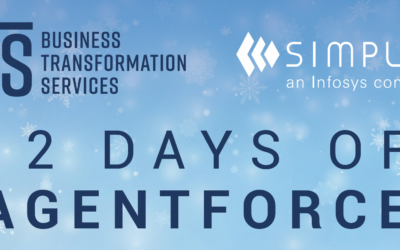When surveyed, many CEOs heartily agree that technology projects can lift business productivity and increase growth—even lifting profits and shareholder value by 30 to 50 percent. And some companies have done just that: look at Toyota and Adidas’ stories of large-scale transformation and the results they yielded. But many organizations still struggle to realize such great returns despite their best efforts. Why is that?
In our experience, disappointing technology project results often come down to misaligned expectations—or, rather, a lack of a proper plan. The budget isn’t right, the timeline isn’t right, or the designated project objectives aren’t right. Let’s examine how companies, big and small, can prepare their large-scale transformation initiatives to get all these ingredients just right.
The right time
Before you’ve even started, business stakeholders and technology specialists are going to want to know when it will end. People work better with deadlines—research shows that the “precommitment” element encourages many workers to be more productive with their time. But your large-scale digital transformation can’t be expected to succeed with a simple “Due by…” sticky note pinned to it. Technology initiatives of this size need a much more detailed and involved timeline that tracks key milestones and incorporates all stages of the project—not just the build.
In fact, after you factor everything in, more project time will likely be spent on everything else other than the technical build-out. There’s planning, analysis, design, persona building, user testing, training… all of these overlooked technology project stages are critical to long-term success and cannot be rushed. There’s often a tendency to rush through some of these stages, favoring more attention on the “build.” But these miscellaneous stages are more the project than the formal build. We’ve seen it time and time again at Simplus: companies that take the time to do proper analysis and design, employ change management, and thoroughly test their solution before final go-live have greater long-term success.
So that’s why building out a comprehensive timeline for your transformation initiative is crucial. It’s setting the stage for your project’s success and gives any of your skeptical critics a visual understanding of exactly how much time needs to be truly dedicated to every stage. At Simplus, our advisory services team is experienced in this very thing—we call it road mapping. Combined with alignment on business objectives and a discovery phase to understand your company’s existing tech stack, road mapping is how we deliver a comprehensive timeline for even the largest digital transformations. Just take a look at our engagement with Mitsubishi Electric HVAC. We’ve done countless projects with them, teaming up with them for their larger transformation goals, and each has been met with applause because we have advisory experts providing a roadmap each time.
The right budget
It’s one of the first concerns that will be raised when you introduce a new technology project: So, how much is this going to cost?
For many technology projects where you’ll pull in additional resources and consultants, you can answer a lot of that question based on the timeline. How many hours of work done by how many people often translates to a hard number you can hand back to your finance department. More pressing, however, is how do you ensure your project delivers the promised, impressive results without going overboard on the dollar signs?
“There is little that is as demoralizing for the technology leader or their team than the ongoing cycle of budget slashing and the perception that successful business investment needs to be fully benchmarked to transformational adventures. As the individuals held accountable for service levels and foundational controls, we spend much of our time defending core investments where we could be focused on adding value,” according to Alizabeth Calder, adjunct analyst, IDC’s IT Executive Programs (IEP) at IDC. “CIOs and IT leaders can better align core strategies and budgets with business-led challenges and opportunities by demonstrating a proactive capability to both manage spending and represent the business strategy.
In short, it’s all about being proactive with business strategy alignment. When pitching a new large-scale and transformative project, make sure the line drawn between the technology improvements and business goals is crystal clear. This will ensure your project only includes the expenses it absolutely needs to reach the already agreed upon business goals—and keep your finance department free of one less heart attack.
The right project
According to research done by McKinsey and the University of Oxford, at least half of large IT projects across all industries ($15 million price tag and more) exceed their budget by 45 percent and go over time by seven percent. And all that just to discover results that disappoint the original goals by 56 percent. Part of this is due to inaccurate timelines or poorly planned budgets, but of greatest concern here is how a project can over-extend on time and money and still not deliver valuable results. That’s beyond dollar signs and deadlines—that is a matter of not embarking on just the right project to begin with.
To make sure your budget and timeline deliver ultimate success, those resources need to be allocated to a project that has been thoughtfully planned—something that will truly deliver the value your end users, or employees, are anticipating. This means moving beyond just financial budgets and calendars and meeting with stakeholders to come to a clear consensus on strategy, employee incentives, and KPIs. Give your project some tangible metrics to meet at the end, not just vague wishes (consider some of our recommendations for CPQ project KPIs). This practice will force your team to truly deliberate and determine what it is they want to get out of the project, as well as consider more seriously what makes this transformation desirable to your staff. Because a large-scale transformation isn’t truly successful unless it’s agreeing with both the desired c-suite metrics and the day-to-day UX of employees.
Your large-scale technology projects deserve the best road mapping and business strategy experience on their side. Reach out to Simplus to learn more about our advisory services and how to align your departments for ultimate success.















0 Comments